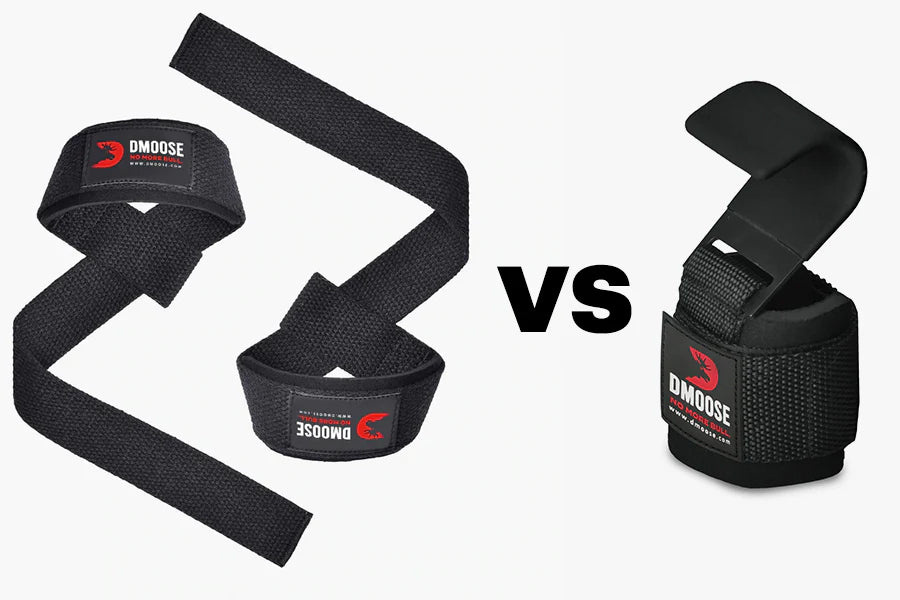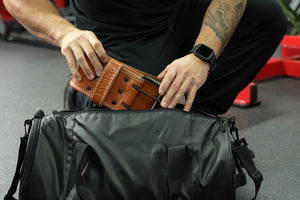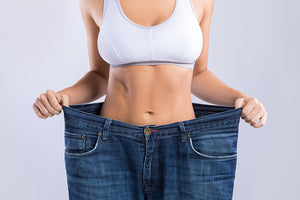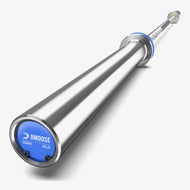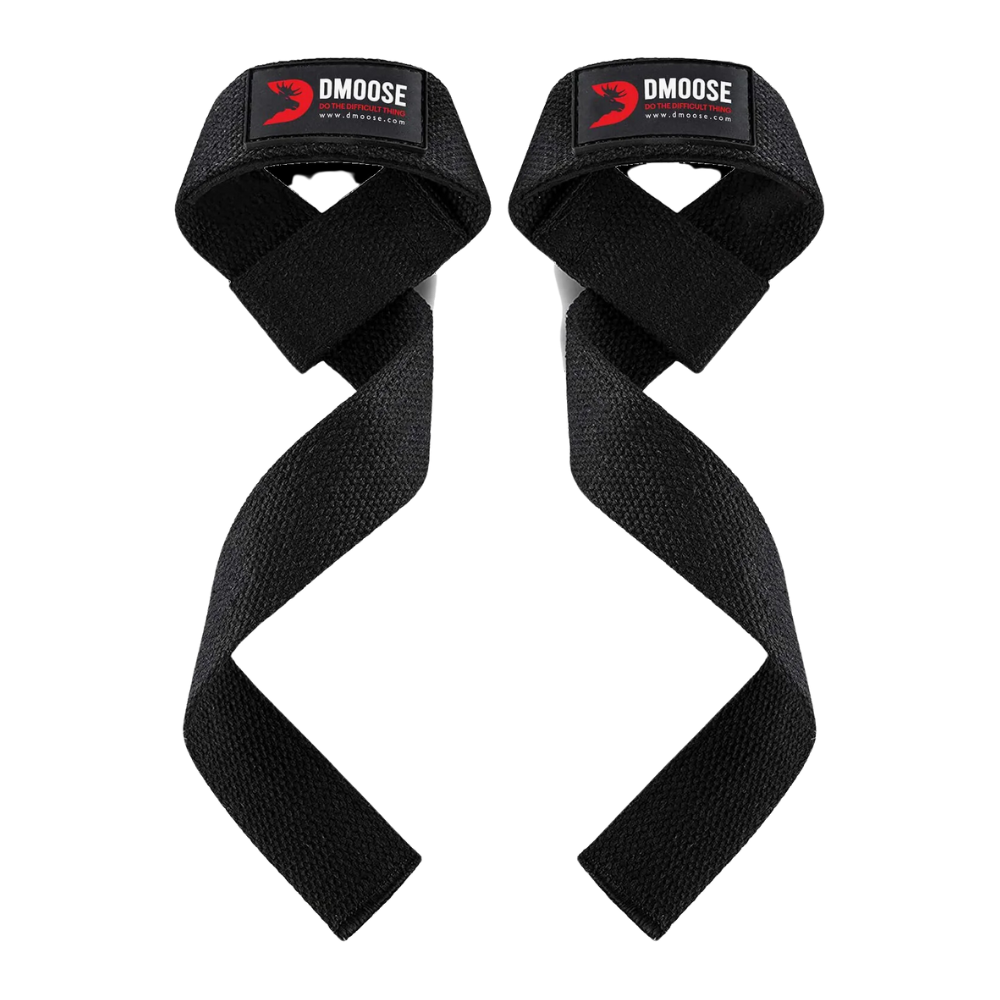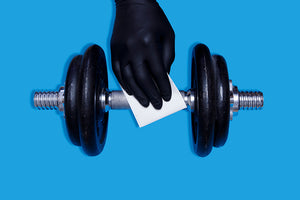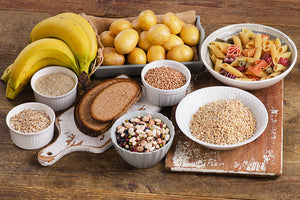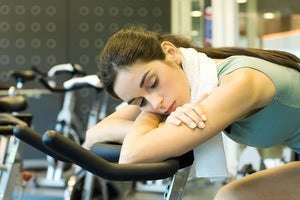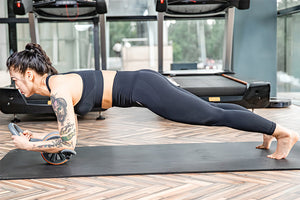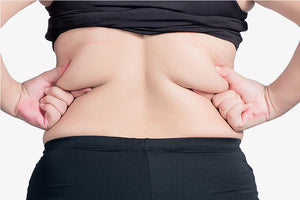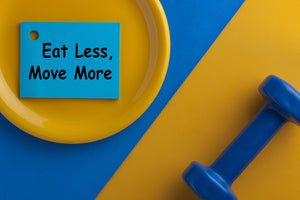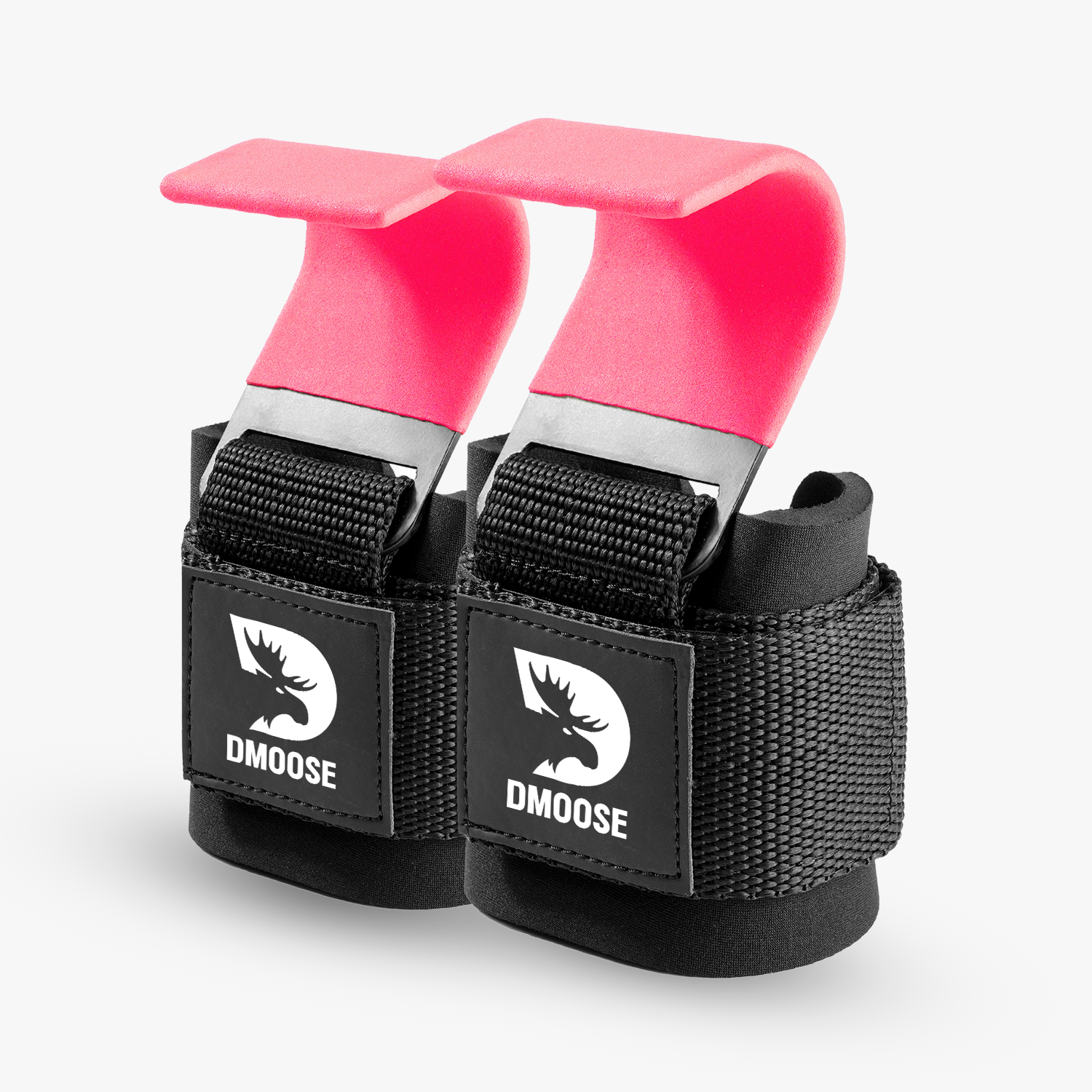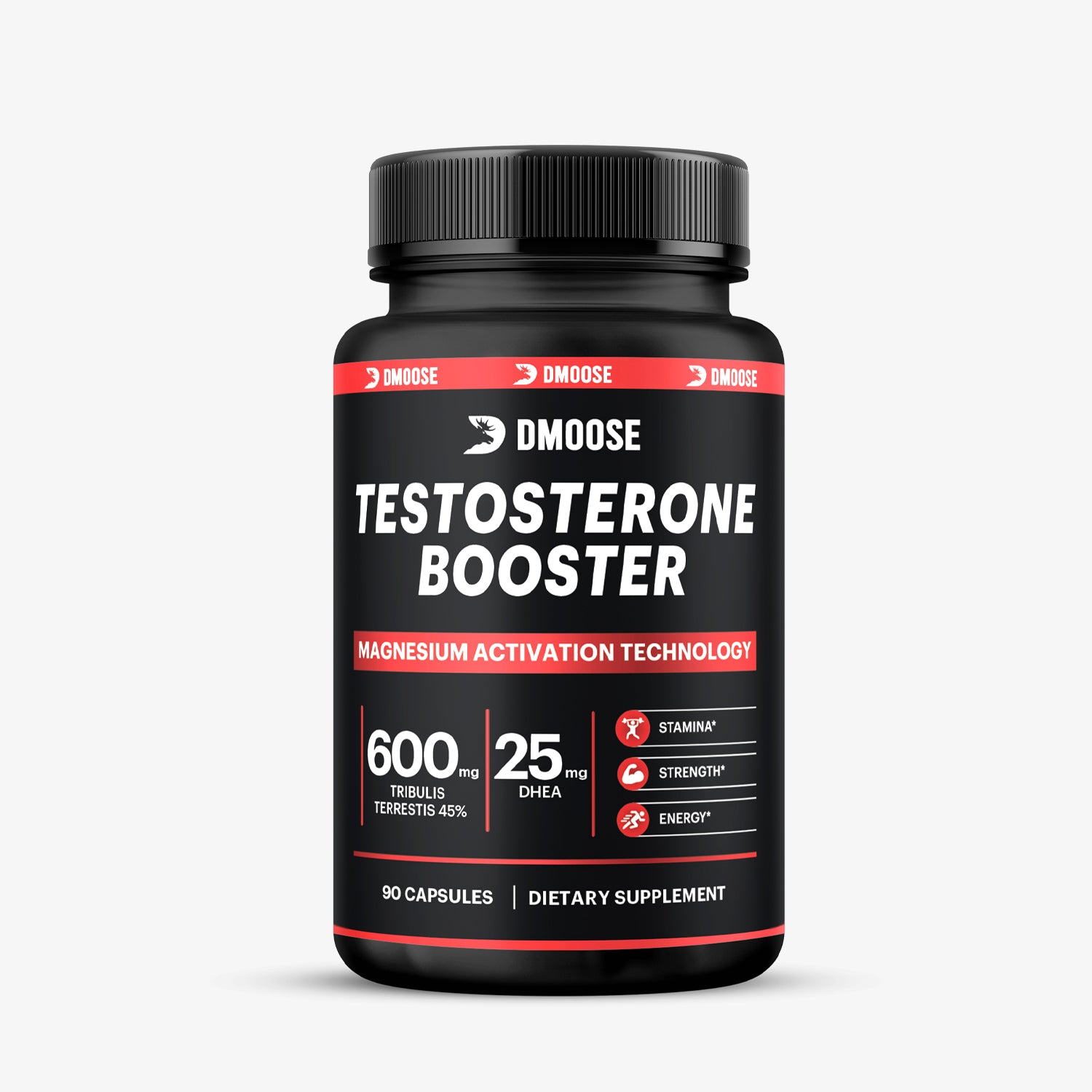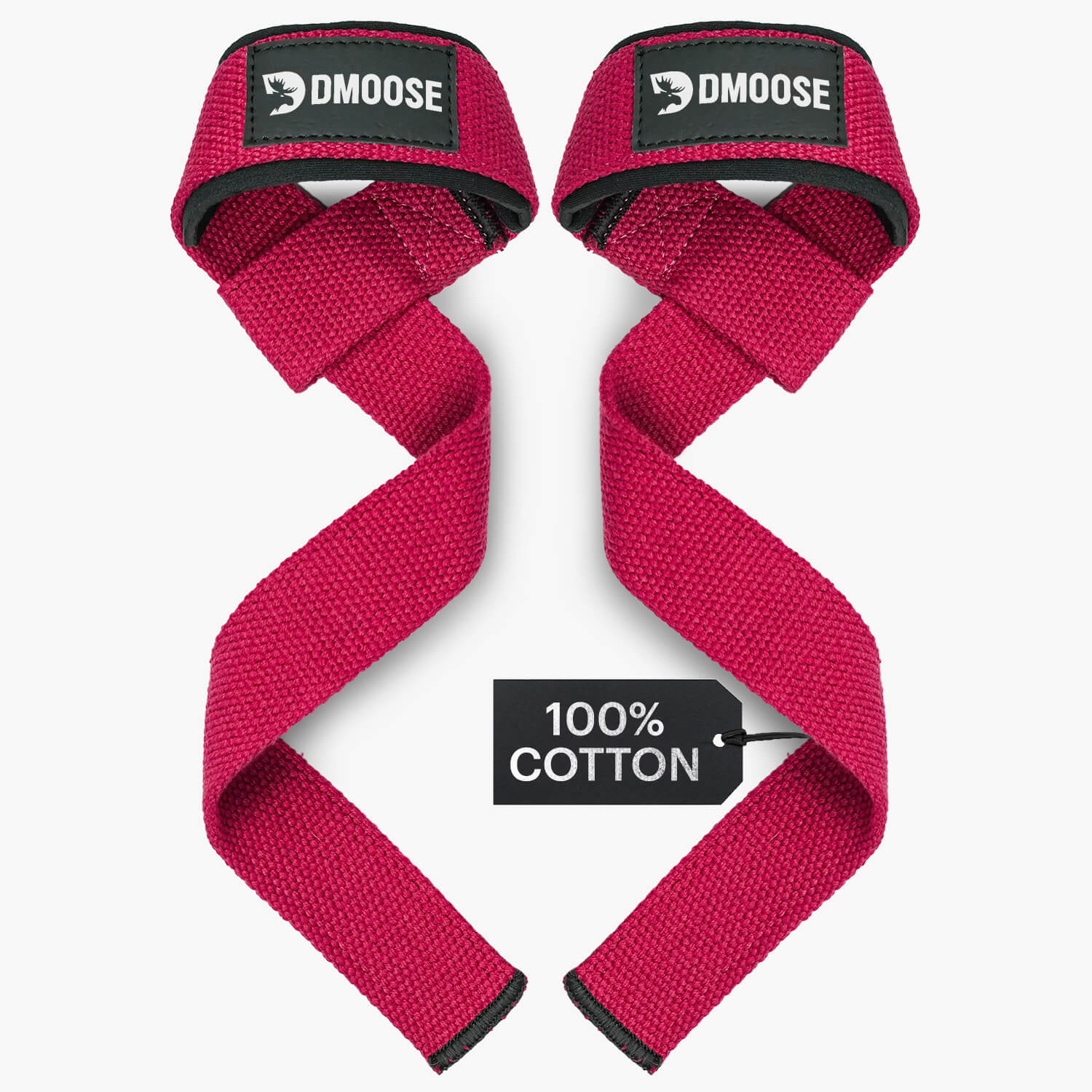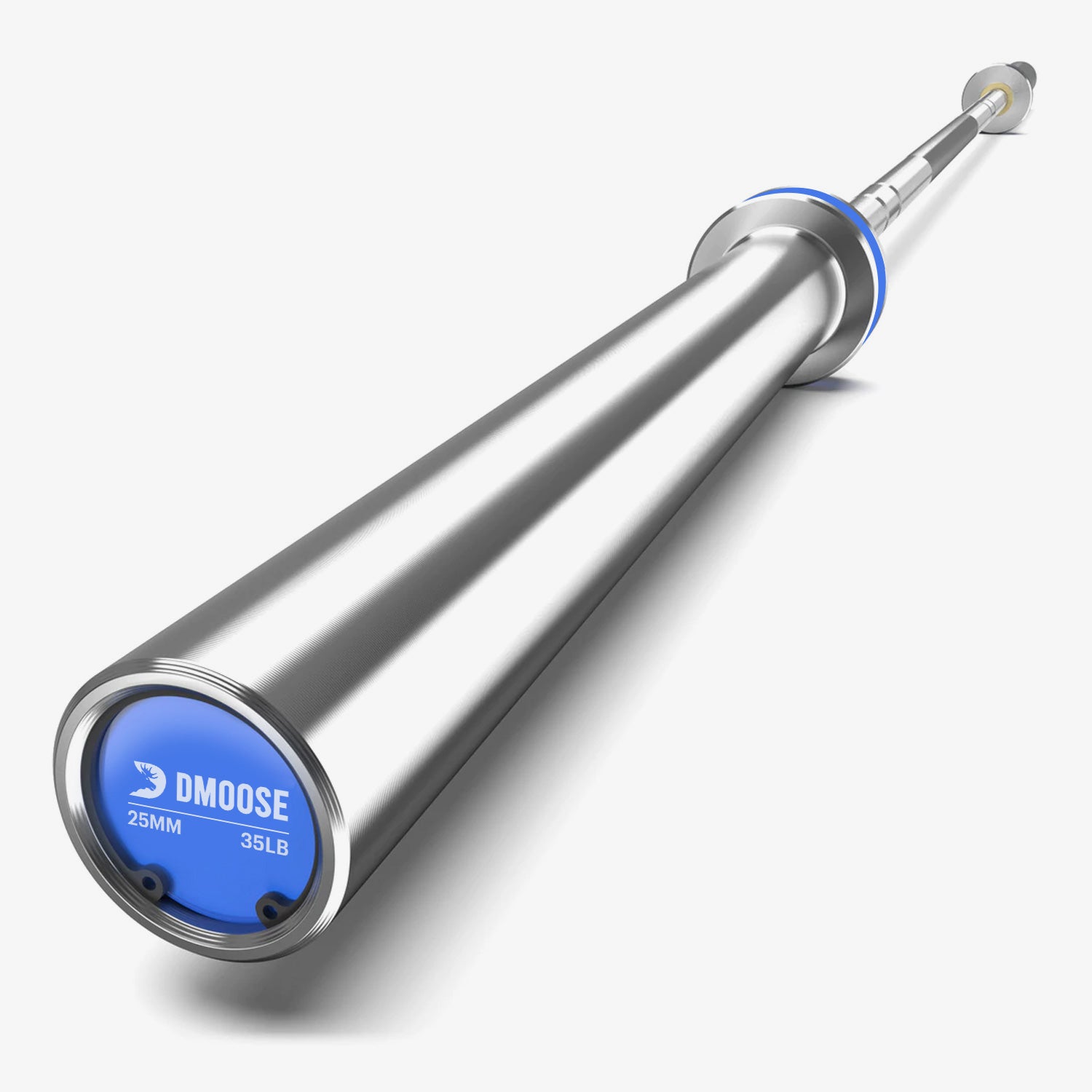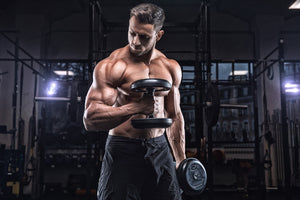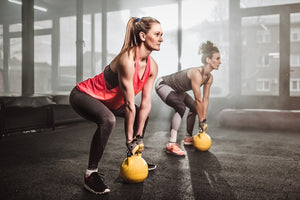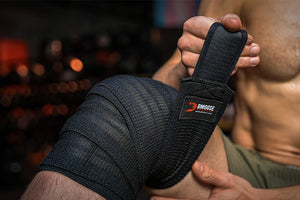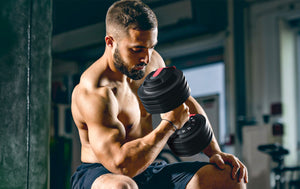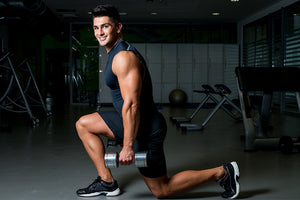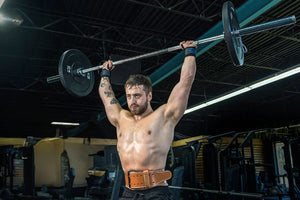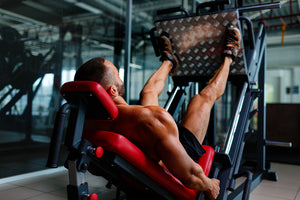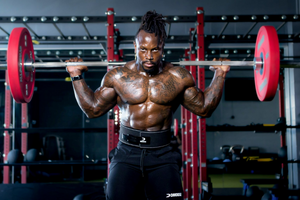Listen up, fellow lifters! We're about to dive into a battle that's as fierce as it is fabulous: Lifting Straps vs. Lifting Hooks! It's time to wear your sassiest workout gear and get ready for tough gym talk.
We all know that heavy lifts can test strength and grip, but fear not because these two contenders are here to save the day. Lifting Straps, the smooth operators, wrap around your wrists like a fashionable accessory, while Lifting Hooks, the rebels with a cause, hook you up with their metal charm.
But which one reigns supreme? Who will dominate the realm of heavy lifting? Get ready for some serious shade, fierce comparisons, and many attitudes as we delve into Lifting Straps vs. Lifting Hooks. Let's separate the weak from the weightlifting chic!
Related Article: How to Fix the Issue of Losing Your Grip During Lifting
What Are Lifting Hooks?

Lifting or weight-lifting hooks are durable loop straps that encircle your wrists. They feature metal hooks that you hold in the palms of your hands.
The purpose of these hooks is to transfer the weight from your wrists to the base of your hands. This shift enables you to handle heavier weights without solely depending on your grip strength for support.
What Are Lifting Straps?

A lifting strap is comparable to a lifting hook because it involves a cushioned strap that wraps around your wrist. However, instead of a hook, it features a long strip of cotton or similar material that you wrap around the bar to provide extra support.
These straps ensure a secure grip and enable you to utilize your full arm strength while lifting, allowing you to concentrate on the weights rather than your hands.
Related Article: How to Use Lifting Straps to Level Up Your Strength Training?
Main Difference Between Lifting Straps and Hooks
Lifting straps and lifting hooks have distinct characteristics that set them apart. A lifting strap is designed as a long strap that wraps around your wrist and needs to be looped around the barbell or dumbbell.
On the other hand, a lifting hook consists of a velcro band that secures the wrist to prevent injuries, along with a hook-shaped metal component that alleviates the strain on your grip. Here are some main differences between lifting straps and hooks you need to hook yourself onto.
1. Versatility
Versatility is a crucial aspect to consider when deciding on a purchase. It refers to the range of exercises that can be performed using a particular tool. Lifting straps are known for their exceptional versatility as a lifting accessory.
They can be effectively utilized for nearly any pull movement. Whether aiming to perform chin-ups or heavy barbell rows, lifting straps provide a reliable solution. Some lifters even employ lifting straps for challenging exercises like front barbell squats, which can strain the wrists, elbows, and shoulders significantly.
In contrast, the utility of lifting hooks is limited, as they can only be used for a narrower range of exercises.
Lifting hooks may not be suitable for fat grip barbells, and not all types of dumbbells may fit appropriately with them. Nevertheless, for the exercises they are compatible with, lifting hooks can help alleviate excessive stress on the wrists.
2. Cost
When considering cost, it becomes evident that lifting straps are generally more budget-friendly than lifting hooks. The price disparity between the two lifting tools can be attributed to the construction, materials used, brand reputation, and additional features.
Lifting straps, the more economical option, can often be acquired at a significantly lower price than their lifting hook counterparts. The cost of lifting straps is generally more accessible to individuals with tighter budgets or those who prefer to save some money while still obtaining a reliable lifting accessory.
3. Wrist Support
Wrist support is an essential factor to consider. If you prioritize wrist support, lifting hooks are the superior option. Lifting hooks have padded wrist wraps that offer enhanced stability and optimal wrist comfort.
While wrist straps provide some assistance for wrist support, they are not as effective as lifting hooks. This is because wrist straps are designed to mimic the natural grip rather than specifically focusing on wrist support.
4. Muscle Isolation
Regarding muscle isolation, the choice of lifting tools becomes crucial. Muscle isolation involves specifically targeting and developing particular muscle groups to achieve maximum hypertrophy in those areas.
An age-old saying suggests using your hands as hooks to enhance muscle isolation. Experts often emphasize using the hands as hooks instead of gripping the barbell tightly when demonstrating proper isolation techniques, such as lateral raises, one-arm rows, or lat pulldowns.
This approach helps to minimize the engagement of supporting muscles, particularly the biceps, which can come into play with a firm grip. While a strong grip may assist in lifting heavier weights, it can hinder muscle isolation.
The grip itself is a powerful neurological stabilizer in the human body. While it is advantageous for compound movements and overall strength, it is not ideal for isolation work targeting specific muscle groups.
Lifting hooks are more effective than lifting straps for isolation exercises. Lifting hooks remove the need for a firm grip, allowing for better concentration on the targeted muscle groups. By eliminating the engagement of the arms and other supporting muscles that come into play with a firm grip, lifting hooks facilitate enhanced concentration and isolation of the intended muscles.
Lifting straps, while reducing the requirement for wrist strength, still necessitates a certain level of wrist stabilization. Therefore, they may not provide the same isolation level as lifting hooks when targeting specific muscle groups.
5. Life Span
Lifting straps are renowned for their exceptional durability and longevity. On the other hand, the lifespan of lifting hooks can vary depending on the quality of the hook used by the manufacturer. Some lifting hooks may be more prone to breaking down over time.
Additionally, the velcro component of lifting hooks can be a potential area of concern. After a year of frequent usage, the velcro may lose its effectiveness, impacting the overall functionality of the lifting hooks.
Considering these factors, it is clear that lifting straps are designed to withstand the test of time and provide long-lasting performance. However, the lifespan of lifting hooks may be more variable, depending on the specific product quality and frequency of use.
6. Ease in Set up
Setting up lifting hooks is undoubtedly more straightforward compared to using lifting straps. With lifting hooks, you only need to hook them onto the barbell, and you're good to go. It's an easy and quick process that requires minimal effort and expertise.
On the other hand, when using lifting straps, there may be a learning curve and some level of expertise required to wrap the straps around the barbell for optimal support properly.
The correct wrapping technique is essential to ensure a secure and effective setup with lifting straps. It may take some practice and guidance to master the proper wrapping technique and achieve the desired level of support.
To aid in understanding the correct technique for wrapping lifting straps around the barbell, watching instructional videos or demonstrations by experienced individuals can be helpful.
For instance, you can refer to videos featuring World Champion Powerlifter Kevin Weiss, who demonstrates the proper technique for wrapping the lifting straps around the barbell, providing valuable insights and guidance.
Related Article: Figure 8 Lifting Straps
TRENDING ARTICLES
How to Use Lifting Straps
To Do It:
- When using a lifting strap, position the part of the strap closest to your palms onto the regional barbell.
- Start wrapping the other end of the strap around the barbell, ensuring it extends between your thumb and index finger while wrapped.
- Once wrapped securely, twist the barbell firmly to lock the strap.
This twisting gives the user a firm and secure grip, enhancing gripping power and stability during lifts.

Regional Barbell - 35 lb
The 1500 lbs. weight capacity bar is made of high-grade steel with a tensile strength of 190,000 psi (a 500 lbs. increase from the DMoose Open Barbell). Regardless of your weight, you can use it for all of your workouts.
How to Use Lifting Hooks
- Slide your hand into the loop strap and wrap it around the base of your wrists.
- Hold the metal hook in your palm to secure the lifting hook in place.
- With the lifting hook adequately secured, the barbell or adjustable dumbbells can rest comfortably on the metal hook instead of relying on your palms.
This setup allows you to lift heavier weights confidently as the weight is shifted away from your wrists and towards the base of your hands.
Exercises Used With Lifting Straps
There are specific exercises that should only be performed using lifting straps. These workouts help avoid injury and improve your body's strength and advantage. Here are some exercises that should be performed using lifting straps.
Deadlifts
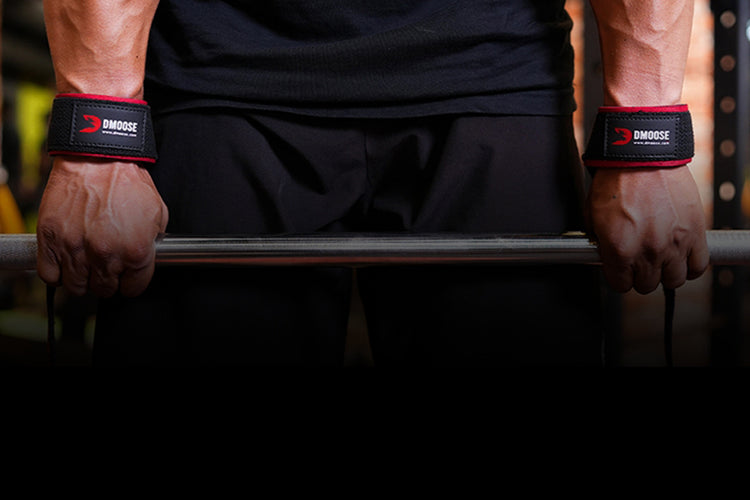
World-class powerlifters have favored the use of lifting straps for deadlifts due to the advantages they offer. Lifting straps enable a grip that closely mimics the natural hand position on the barbell, promoting a better relationship between the mind and body during the lift.
One significant drawback of using lifting hooks for deadlifts is that you cannot release the weight if you reach failure or encounter a challenging situation.
It is helpful to understand their optimal utilization when you have both lifting straps and lifting hooks available. Lifting straps are particularly effective for executing heavy deadlifts, where maximum support and grip assistance are required.
Pull-Ups
Lifting straps are an excellent pull-up choice, offering valuable support and enhancing overall performance. When engaging in pull-ups, grip strength can often become a limiting factor, especially as fatigue sets in.
Incorporating Pre-Workout Supplements by DMoose into your routine can be a beneficial way to combat fatigue and enhance your workout performance. These supplements boost energy, improve focus, and increase endurance, allowing you to push harder during your training sessions.
However, by incorporating lifting straps into your pull-up routine, you can alleviate the strain on your grip and focus more on targeting your back and upper body muscles.
The straps securely wrap around the bar and provide a firm and stable connection, allowing you to maintain a solid grip without slipping or losing control. This enhanced grip support enables you to perform more reps and maintain proper form, ultimately maximizing the effectiveness of your pull-up workout.
Bent Over Barbell Rows
Maintaining a secure grip on the barbell can become challenging during bent-over barbell rows, mainly when using heavy weights or performing high-volume sets. This is where lifting straps come into play.
You can ensure a strong and stable grip throughout the exercise by securely fastening the straps around the barbell and wrapping them around your wrists. This takes the strain off your forearms and grip strength, allowing you to focus solely on engaging your back muscles and achieving proper form.
Wide Grip Seated Rows
Wide grip seated rows can significantly benefit from lifting straps, providing stability and support for optimal performance. Maintaining a secure grip on the handles or attachment can be challenging when performing this exercise, especially as exhaustion sets in.
Lifting straps offer a solution by eliminating the strain on your grip and allowing you to focus entirely on targeting your back muscles. By securely attaching the straps to the handles or attachment, you create a solid connection that enhances your grip and prevents slipping or loss of control.
Dumbbell Step Ups
By securely attaching the straps to the dumbbells, you can alleviate the stress on your grip and focus more on driving through your legs and engaging the targeted muscles.
Lifting straps provide a stable and secure connection between your hands and the dumbbells, allowing you to lift heavier weights and perform the exercise with greater control and confidence.
This not only helps reduce the risk of dropping the dumbbells but also enables you to fully concentrate on the muscle contractions and achieve a more effective workout for building strength and muscle in the lower body.
Exercises Used With Lifting Hooks

There are specific exercises that can significantly benefit from the use of lifting hooks. These versatile accessories can provide valuable support and assistance, helping you perform specific movements more effectively while minimizing the risk of injury.
Using lifting hooks, you can enhance your grip strength, maintain proper form, and focus on the targeted muscles without being limited by your grip strength. Here are some exercises where lifting hooks can be beneficial.
Farmer's Walk
One common challenge encountered during farmers' walks is that grip strength often fatigues before the shoulders, traps, and back muscles. This can hinder the effectiveness of the exercise.
Incorporating lifting hooks is highly recommended to overcome this issue and maximize upper body strength development.
Lifting hooks provide an excellent solution by relieving excessive stress from the forearms and allowing you to continue training until failure. While lifting straps can also assist in reducing forearm stress, they are not as effective as lifting hooks.
Heavy Pull Movement
Lifting straps are highly effective for heavy pull movements, providing excellent support and grip assistance. However, opting for lifting hooks would be more suitable if you aim to achieve better hypertrophy through muscle isolation.
Lifting hooks significantly enhances lat pull-downs, single-arm rows, and underhand barbell rowing exercises. By using lifting hooks, the engagement of the arms is reduced, allowing for greater activation of the targeted muscles. This, in turn, promotes better muscle isolation and facilitates the desired hypertrophy effect.
Ab Training
For specific individuals, the ability to hang on a bar for an extended period can be challenging, rendering exercises such as the hanging leg raise less effective. However, there is a viable solution to overcome this limitation and maximize the training potential for your abdominal muscles.
By utilizing a technique known as "hooking" yourself to the bar, you can securely suspend yourself and engage in ab training until the point of muscle failure.
Heavy Deadlifts
Lifting hooks excel in high-volume deadlifts, especially when targeting a higher repetition range of 8-12 reps. By reducing the engagement of the arms, lifting hooks can facilitate the development of a thicker back during these higher-volume deadlift sessions.
Who Should Use Lifting Straps
Lifters seeking immediate improvement in grip strength can rely on lifting straps as an effective solution. Using lifting straps only during the most challenging sets is recommended to prevent grip fatigue while avoiding becoming overly dependent on them.
Once you have mastered wrapping the straps around the barbell, you will feel more self-assured using them for any exercise. Properly securing the straps may take a minute, but practice can reduce this to approximately 10 seconds.
Regardless of your lifting goals or experience level, incorporating lifting straps as a regular part of your gym equipment is highly beneficial. While you may not need them for every workout, when the need arises, lifting straps allow you to lift heavier weights and push yourself further in the gym.
Related Article: A Complete Guide to Using Lifting Straps
Who Should Use Lifting Hooks
If you are new to weightlifting and haven't reached the point of lifting over 300 lbs, lifting hooks can benefit you. However, it's essential to consider the size of your hands, as lifting hooks tend to be more comfortable for individuals with larger hands.
Lifting hooks are handy if you primarily want to improve your grip for exercises such as deadlifts, rows, and shrugs without requiring grip assistance for other movements.
DMoose Lifting Straps

DMoose lifting straps are a handy accessory for your workout routine, offering exceptional support and grip assistance. Designed with durability and functionality, these lifting straps are crafted from heavy-duty cotton material, ensuring long-lasting performance.
With a length of 23 inches and a width of 1.5 inches, they provide ample room to wrap around the bar securely. The neoprene padding on the straps offers added comfort, reducing the risk of discomfort or chafing during intense lifting sessions.
DMoose lifting straps boast heavy-duty stitching that guarantees reliability and safety, allowing you to lift heavier weights confidently.
These lifting straps can significantly improve your grip strength and maintain proper form, enabling you to focus on targeting specific muscles without worrying about grip fatigue or slipping.
Whether you're performing deadlifts, rows, or pull-ups, DMoose lifting straps are a valuable tool to enhance your lifting performance and achieve optimal results.
DMoose Lifting Hooks
DMoose Lifting Hooks are a highly effective addition to your workout routine, providing exceptional support and grip for heavy lifting exercises. These lifting hooks are constructed with durability in mind, featuring heavy-duty steel hooks that can withstand rigorous training sessions.
A comfortable and adjustable neoprene wrist strap provides a secure and snug fit to prevent slipping or discomfort during lifts. The hooks have a 2.8-inch opening, allowing them to attach to barbells, dumbbells, or cable machines easily.
This ensures a robust and reliable grip, alleviating strain on your wrists and fingers. DMoose Lifting Hooks are particularly beneficial for deadlifts, shrugs, and pull-ups, where a secure grip is crucial for proper form and maximum performance.
By incorporating these lifting hooks into your routine, you can enhance your lifting capacity and focus more on targeting the desired muscle groups without being limited by grip strength. Whether you're a beginner or an experienced lifter, DMoose Lifting Hooks provides a valuable advantage to take your workouts to the next level.
Take Away
Both lifting straps and hooks are valuable accessories that greatly enhance your workout routine. Lifting straps provide grip assistance and support, allowing you to maintain a secure hold on the bar or weights during exercises such as deadlifts or rows.
They help to alleviate grip fatigue and enable you to focus more on engaging the targeted muscles. On the other hand, lifting hooks offer a secure attachment to the bar, alleviating strain on your wrists and fingers.
Whether you lift straps or hooks, incorporating these accessories into your routine can help you push your limits, increase strength, and reduce the risk of injury.
Ultimately, the choice between lifting straps and lifting hooks depends on your specific needs and preferences, but both can be valuable tools to support and enhance your lifting journey.



